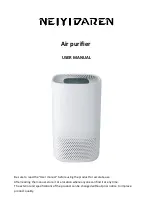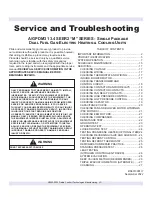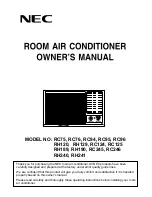
11
Ins
tallation Pr
oc
edur
e
English
5
Check that the flaring is correct, referring to the
illustrations below for examples of incorrect flaring.
Correct
Inclined
Damaged
Surface
Cracked
Uneven
Thickness
Step 7 Connecting the assembly
pipes to the refrigerant pipes
There are two refrigerant pipes of different diameters :
• A smaller one for the liquid refrigerant.
• A larger one for the gas refrigerant. The inside of
copper pipe must be clean and has no dust.
1
Remove the pinch pipe on the pipes and connect the
assembly pipes to each pipe, tightening the nuts, first
manually and then with a torque wrench, a spanner
applying the following torque.
Torque
wrench
Flare nut
Spanner
Union
Outer Diameter (mm)
Torque (N•m)
Ø6.35
14 to 18
Ø9.52
34 to 42
Ø12.70
49 to 61
Ø15.88
68 to 82
Ø19.05
100 to 120
(1 N•m=10 kgf•cm)
NOTE
• If the pipes must be shortened, see
.
2
Be sure to use an insulator thick enough to cover the
refrigerant tube to protect the condensate water on
the outside of the pipe falling onto the floor and to
improve the efficiency of the unit.
3
Cut off any excess foam insulation.
4
Make sure that there are no cracks or waves on the
bent area.
5
It would be necessary to double the insulation
thickness (10 mm or more) to prevent condensation
even on the insulator when if the installed area is
warm and humid.
CAUTION
• Connect the indoor and outdoor units using pipes
with flared connections (not supplied). For the lines,
use insulated, unwelded, degreased and deoxidized
copper pipe (Cu DHP type to ISO 1337 or UNI EN
12735-1), suitable for operating pressures of at least
4.2 MPa and for a burst pressure of at least 20.7 MPa.
Copper pipe for hydro-sanitary applications is
completely unsuitable.
• For sizing and limits (height difference, line length,
max. bends, refrigerant charge, etc.) see the outdoor
unit installation manual.
• All refrigerant connection must be accessible, in order
to permit either unit maintenance or removing it
completely.
• If the pipes require brazing, make sure that oxygen
free nitrogen (OFN) is flowing through the system.
• Nitrogen blowing pressure range is 0.02 to 0.05 MPa.
CAC_R32_호주향 360 IM_EN_DB68-08492A-01.indb 11
2019-08-27 오후 3:49:09












































